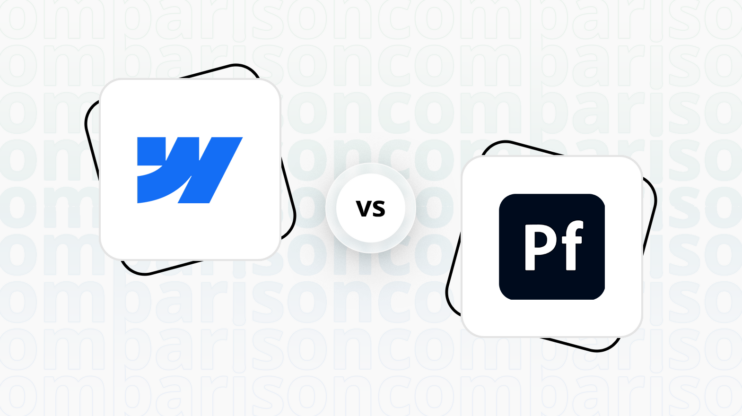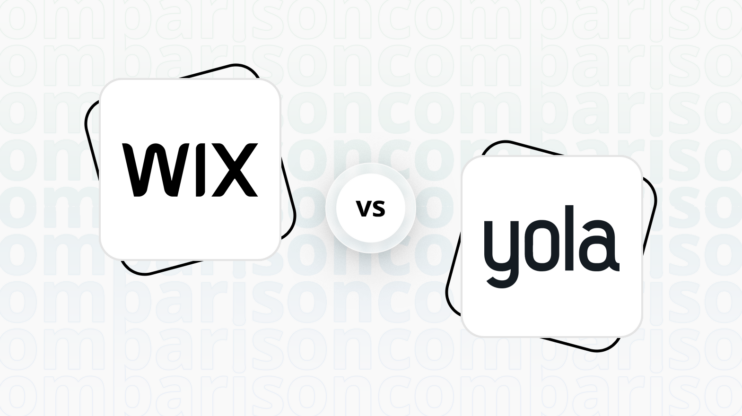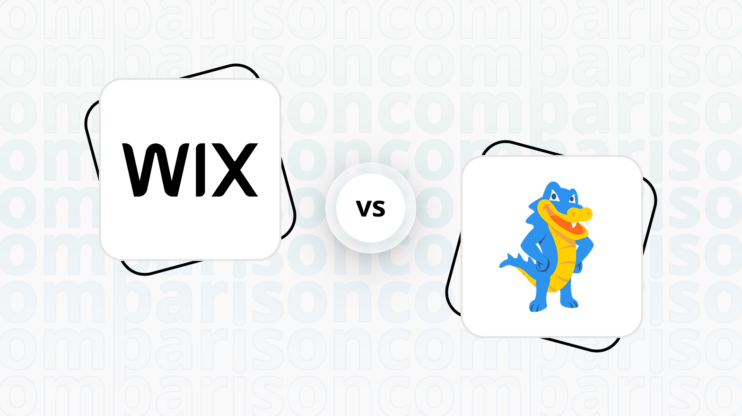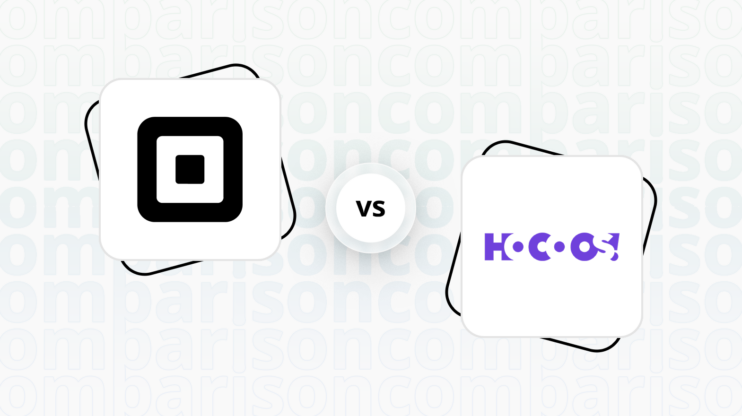Format vs SubHub: Final verdict
Format and SubHub both offer specialized platforms, but they cater to different audiences with unique needs.
-
Format (Overall Grade: 5.8/10)
is tailored for creative professionals such as photographers, artists, and designers. It excels in providing customizable templates and an intuitive drag-and-drop interface, making it easy to create visually appealing portfolios. With features like an integrated online store, client proofing, and blogging tools, Format is ideal for creatives looking to showcase their work and connect with potential clients. When comparing Format vs SubHub, Format stands out for its design functionalities and ease of use. -
SubHub (Overall Grade: 5.6/10)
is designed for content creators and entrepreneurs aiming to build and monetize membership sites. It offers tools for setting up subscription models, managing member access, and providing exclusive content. SubHub’s strengths lie in its ecommerce capabilities, user management, and marketing features, making it a suitable choice for those looking to grow a membership-based business. In the Format vs SubHub comparison, SubHub excels in user management and marketing features, providing a comprehensive platform for content monetization.

|

|
|
|---|---|---|
|
Design functionalities & templates |
7.0 |
6.8 |
|
Ease of use |
8.3 |
7.7 |
|
Ecommerce |
5.2 |
5.9 |
|
Website Editors |
7.5 |
6.9 |
|
Product testing options |
8.3 |
7.0 |
|
Price |
7.9 |
6.8 |
|
Hosting quality |
5.0 |
5.5 |
|
Website speed optimization |
5.0 |
5.6 |
|
Plugins and integrations |
4.9 |
5.7 |
|
Marketing features |
5.3 |
5.7 |
|
Customer support |
7.0 |
6.3 |
|
Security |
7.4 |
4.0 |
|
AI capabilities |
0.0 |
0 |
|
User Management |
2.8 |
5.2 |
Which one is the best for ecommerce: Format or SubHub?
 5.2
5.2
 5.9
5.9
Verdict
: Format and SubHub cater to different niches, with SubHub slightly edging out Format in ecommerce capabilities. Format is ideal for creative professionals, while SubHub is better suited for content creators and entrepreneurs.
-
Format
: Format offers essential ecommerce features tailored for creative professionals. It includes inventory management, discounts, and multiple currency options. However, its ecommerce capabilities are basic, making it more suitable for showcasing and selling creative work rather than handling complex ecommerce operations. -
SubHub
: SubHub provides a more comprehensive set of ecommerce tools, including PayPal and Stripe integration, physical and digital product listings, and pay-per-view content. It also offers extensive product page customization options and does not charge commissions on transactions, making it a better choice for content creators and entrepreneurs looking to monetize their content.
Which one is the best for informational and business websites?
 7.2
7.2
 7.2
7.2
Verdict
: Both Format and SubHub score equally at 7.2 for informational and business websites, but they cater to different needs. Format is ideal for creative professionals looking to showcase their portfolios, while SubHub is tailored for membership sites and content monetization.
-
Format
: Format is designed for creative professionals such as photographers, artists, and designers. It offers a range of customizable templates that are visually appealing and easy to manage with its drag-and-drop interface. Format includes features like an integrated online store, client proofing, and blogging tools, making it a comprehensive platform for creatives to share their work and connect with potential clients. When comparing Format vs SubHub, Format stands out for its focus on high-quality imagery and mobile-friendly designs. -
SubHub
: SubHub is a website builder designed specifically for creating and managing membership sites. It offers tools tailored for content creators and entrepreneurs who aim to build a community and monetize their content. SubHub simplifies the process of setting up subscription models, managing member access, and providing exclusive content. It is an ideal choice for those looking to start or grow their membership-based business. In the Format vs SubHub comparison, SubHub excels in providing a user-friendly platform for building and managing membership websites.
Format vs SubHub: Detailed comparison
Design functionalities & templates
Design FunctionalitiesRepresents how well each platform allows for creative design and customization of websites.Score Components:
- Template Variety (30%): Range and quality of design templates.
- Customization (30%): Flexibility and options for design alterations.
- User Interface (20%): Ease and intuitiveness of the design process.
- Responsiveness (10%): Adaptability to different devices and screen sizes.
- Innovation (10%): Unique design features and tools.
 7.0
7.0
 6.8
6.8
🏆
Winner: Format.
If you’re a creative professional looking for a platform that offers a range of customizable templates tailored to showcase portfolios in a visually appealing manner, Format is the preferred choice.
Format is a website builder specifically designed for creatives, offering nearly 100 customizable templates tailored for various artistic disciplines. It emphasizes high-quality imagery and mobile-friendly designs, ensuring portfolios look professional on any device.
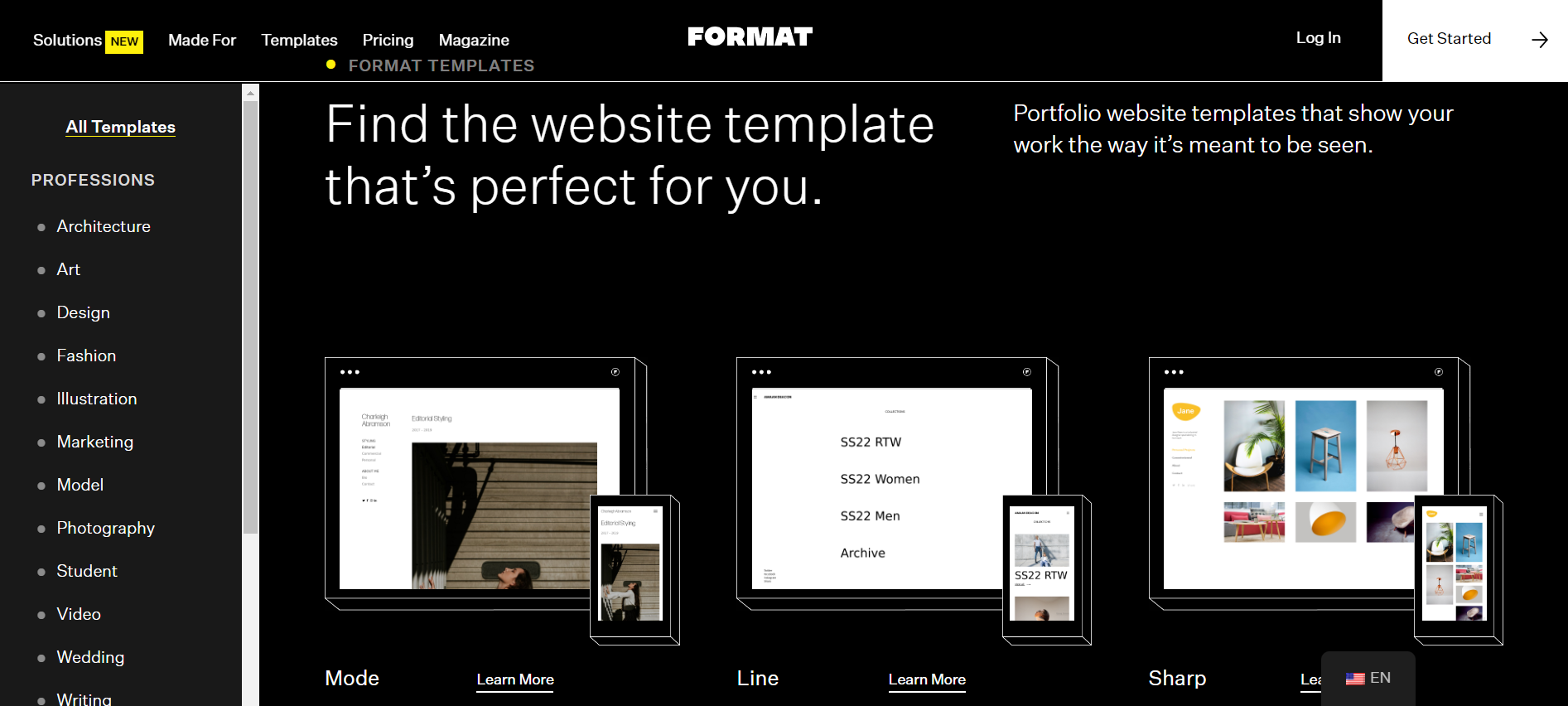
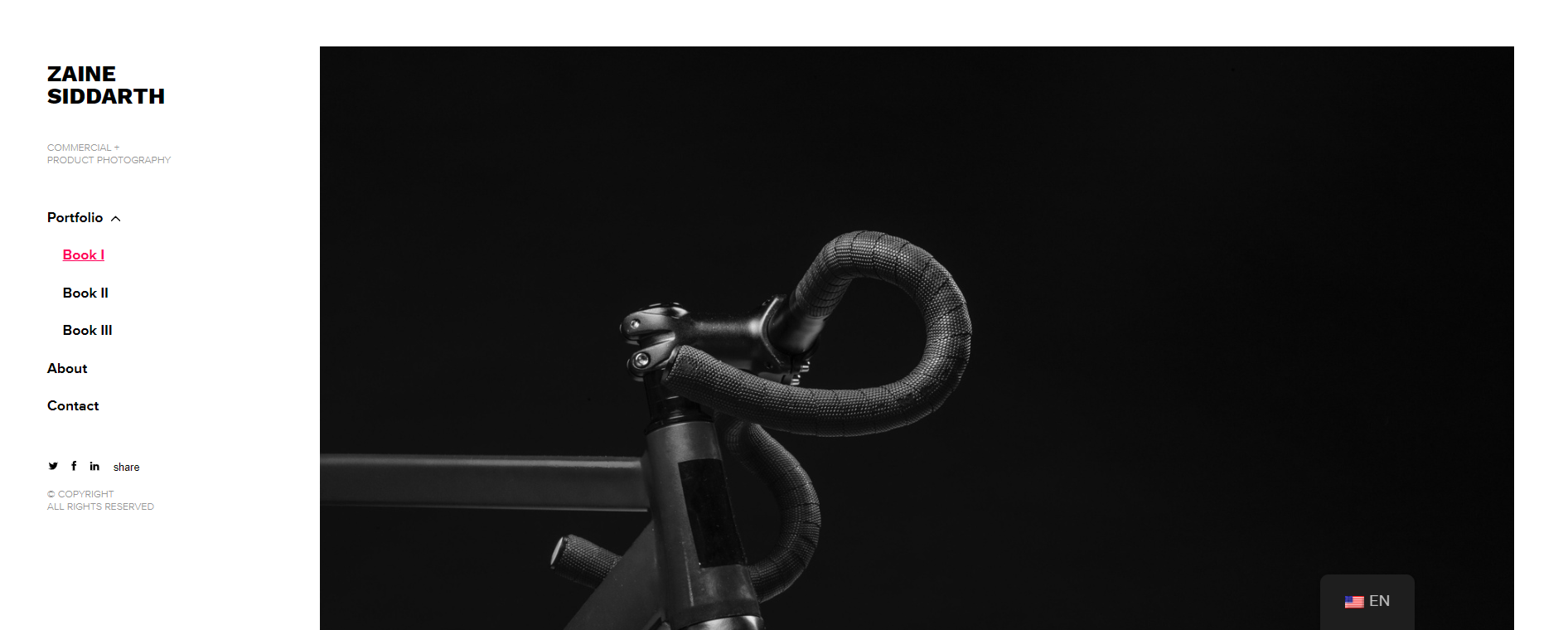
On the other hand, SubHub is a website builder designed specifically for creating and managing membership sites. It offers a range of tools tailored for content creators and entrepreneurs who aim to build a community and monetize their content. SubHub offers a variety of customizable membership website templates designed to cater to different needs and themes.
Get a head start on website creation with AI
Create a custom website tailored to your business needs 10X faster with 10Web AI Website Builder!
Ease of use
Ease of useReflects the platform’s overall user-friendliness.Score
Components:
- Learning curve (40%): Quickness and ease of getting started.
- Interface design (30%): Simplicity and intuitiveness of layout.
- User guidance (20%): Quality of tutorials and support.
- Flexibility (10%): Adaptability to various user skills.
 8.3
8.3
 7.7
7.7
🏆 Winner: Format
. Scoring 8.3, Format is specifically designed for creative professionals, offering a range of customizable templates and an intuitive drag-and-drop interface. SubHub, with a score of 7.7, is a user-friendly platform designed for building membership websites and online courses. However, Format’s focus on creative professionals and its user-friendly interface give it the edge in this category.
Learning Resources
🏆 Winner: SubHub
. Both platforms offer solid learning resources, but SubHub goes a step further with its video guides and tutorials, comprehensive FAQ section, and premium phone support, making it easier for users to learn and adapt.
For ecommerce
EcommerceMeasures the platform’s effectiveness in supporting online business activities.Score Components:
- Ecommerce themes and templates (20%): Variety and design of templates.
- Product management (25%): Ease of managing and organizing products.
- Payment options (25%): Variety and convenience of payment methods.
- Ecommerce features (20%): Features for managing an ecommerce store.
- Integration (10%): Compatibility with external e-commerce tools and services.
 5.2
5.2
 5.9
5.9
When it comes to ecommerce, both Format and SubHub offer basic functionalities. Format, designed for creative professionals, provides features such as product management, currency options, and discounts. SubHub, on the other hand, is tailored for content creators and entrepreneurs, offering features like sales of physical goods, digital products, and pay-per-view content, with a customizable storefront and product categories.

|

|
|
|---|---|---|
|
Ecommerce themes and templates |
4.0 |
3.0 |
|
Product page customization |
5.5 |
6.5 |
|
Payment processing and commissions |
4.5 |
7.0 |
|
POS capabilities |
0.0 |
0.0 |
|
Payment gateways |
6.5 |
6.0 |
|
Product numbers |
5.0 |
5.0 |
|
Additional ecommerce features |
3.5 |
4.5 |
Format ecommerce features:
- Inventory management and tracking
- Discounts
- Multiple currency options
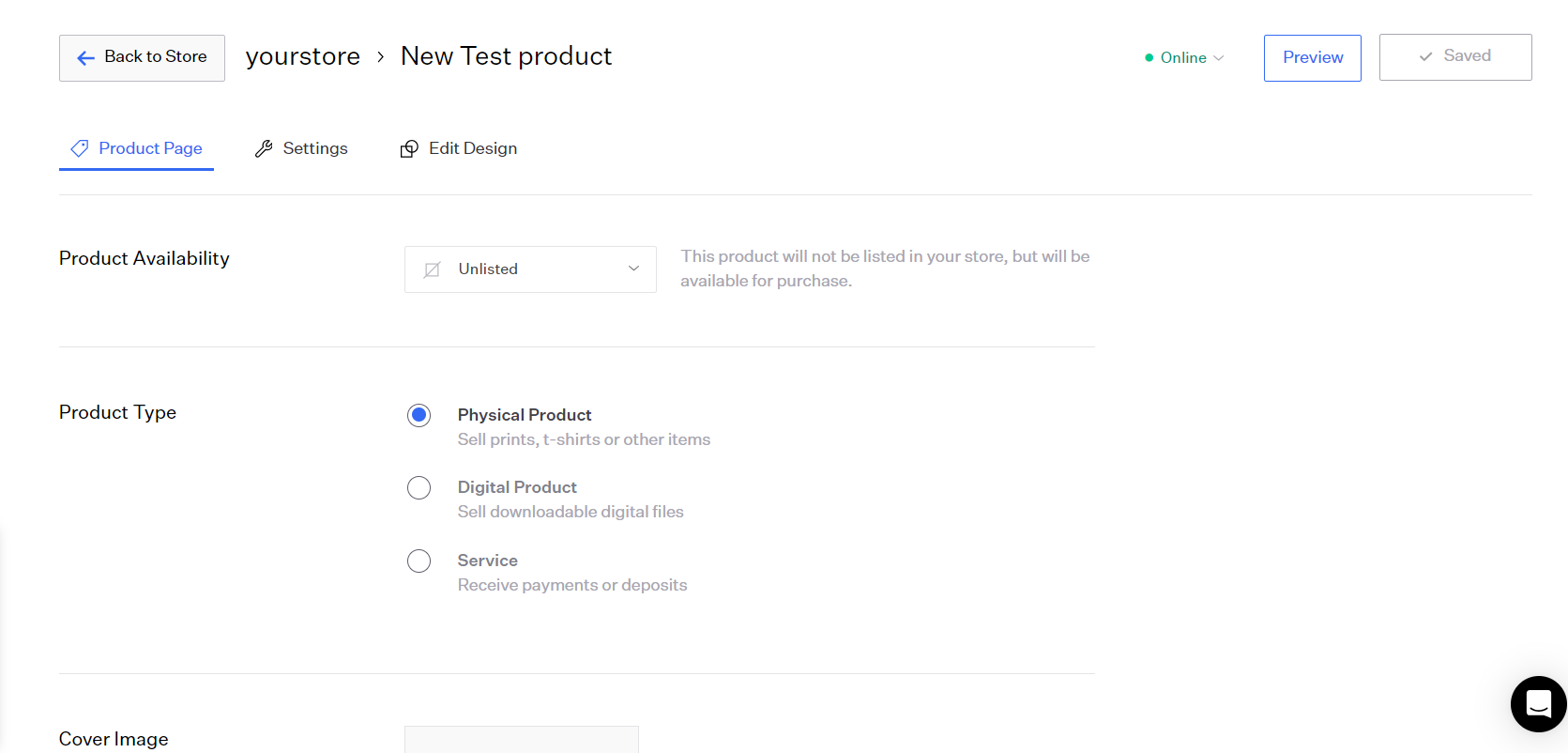
SubHub ecommerce features:
- Paypal and Stripe integration
- Physical and Digital product listings
- Pay-per view products
Ecommerce themes & templates
Neither Format nor SubHub offer ecommerce specific templates. This is likely due to their focus on specific niches – creative professionals for Format and content creators for SubHub.
Product page customization
Format offers limited specific details on product page customization, but its ecommerce features suggest a focus on showcasing products through high-quality imagery and detailed descriptions. You can manage product specifics like shipping, availability, and pricing, with customization likely extending to layout and presentation styles to highlight products effectively.
SubHub, on the other hand, offers a range of product page customization options, allowing for the addition of physical items, digital downloads, and pay-per-view content. Features include the ability to manage product variants, upload images, and set visibility preferences. Users can also implement SEO strategies through meta tags and manage tax settings. Additional functionalities include member-specific discounts, image carousels, and individualized shipping costs.
Payment processing
Format integrates with major payment gateways, including Paypal and Stripe, and charges a 15% commission on the Pro plan and 5% on the Pro Plus plan. However, it does not have built-in POS (Point of Sale) capabilities.
SubHub supports two main payment gateways: Stripe and PayPal. These integrations allow for secure payment processing for subscriptions and store items using debit or credit cards. The platform itself does not charge commissions on transactions.
In conclusion, while both Format and SubHub offer basic ecommerce functionalities, they cater to different audiences and have their unique strengths. Format is more suited for creative professionals looking to showcase and sell their work, while SubHub is ideal for content creators and entrepreneurs looking to build a community and monetize their content.
Website Editors
Website EditorsEvaluates the platforms’ website building and editing capabilities.Score Components:
- Customization tools (40%): Range and power of editing features.
- Editor usability (30%): User experience within the editor.
- Design flexibility (20%): Freedom in layout and design changes.
- Update and maintenance ease (10%): Simplicity of updating and maintaining the site.
 7.5
7.5
 6.9
6.9
🏆
Winner: Format
. Format, with a score of 7.5, offers a variety of features for creating online portfolios. It provides nearly 100 professionally designed templates and thousands of design variations without requiring any coding. Users can express creativity with custom pages, incorporating unique gallery layouts, colors, text formatting, and custom code embeds. The templates and pages are fully responsive, ensuring a mobile-first experience. Format also supports direct video hosting, high-quality image rendering, and easy template switching to give sites a new look. Additionally, it includes studio management tools, e-commerce capabilities, and SEO tools.
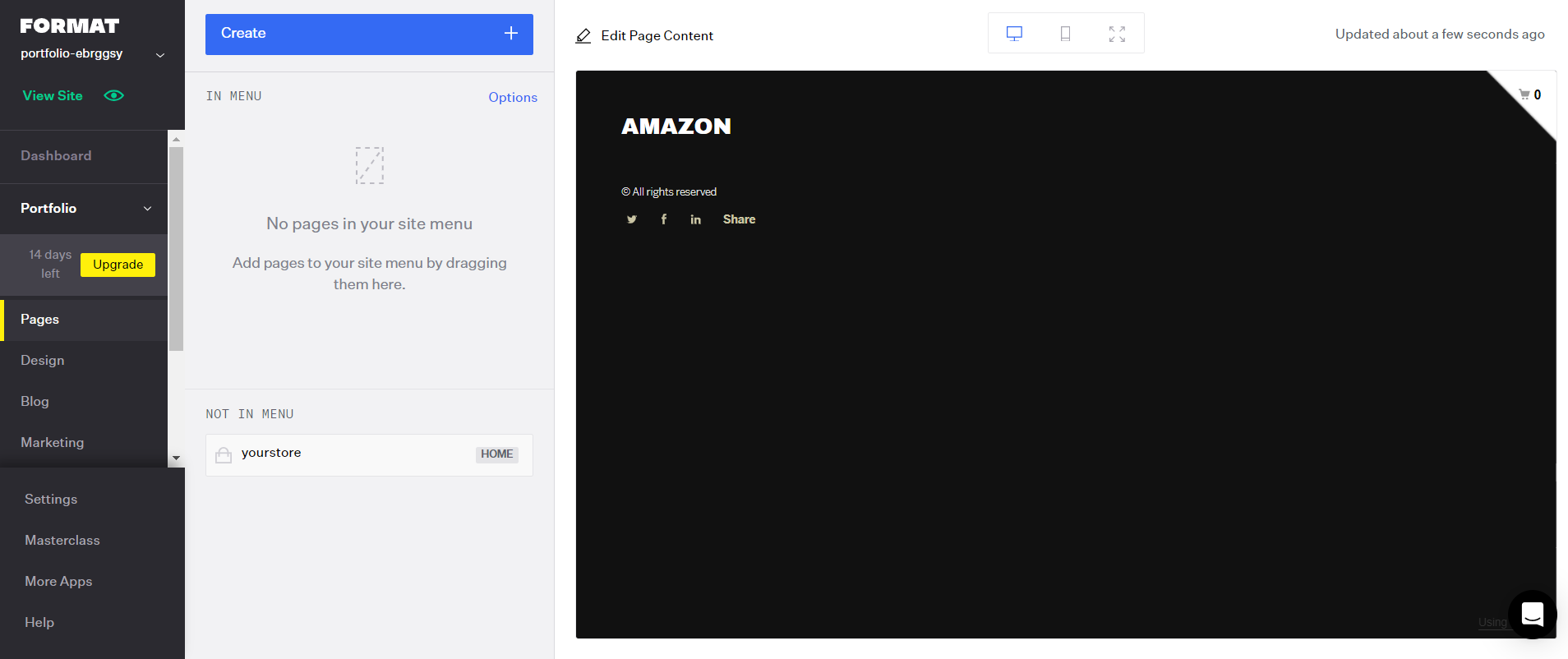
SubHub’s editor, scoring 6.9, offers a user-friendly website builder tailored for creating and managing membership sites, catering to content creators and entrepreneurs aiming to monetize their offerings. Its features encompass customizable templates, diverse content publishing options, and flexible subscription plans with seamless integration for recurring revenue through payment processors. Additionally, SubHub supports online course creation, provides marketing tools like landing page builders, and offers detailed analytics for monitoring website metrics.
Mobile editor/app
 4.0
4.0
 4.0
4.0
🏆
Draw: Format vs SubHub
. Both Format and SubHub have the same score of 4.0 for their mobile editor. However, neither of them offers a dedicated mobile app for editing. Users can manage some content on their website using the mobile browser version, but it’s not possible to change the layout and design of the website on mobile for both builders. Therefore, there is no clear winner in this category.
Product testing options
Product Testing OptionsAssesses the options for trying out platform features before commitment.Score Components:
- Trial quality (40%): Extent and usefulness of the trial or free version.
- Feature accessibility (30%): How many features are available to test.
- Trial duration (20%): Length of the trial period.
- Ease of transition (10%): Smoothness of moving from trial to paid plans.
 8.3
8.3
 7.0
7.0
Overall Result
:
Format wins
. Format scores 8.3 in product testing options, while SubHub scores 7.0. Both Format and SubHub offer a 14-day free trial, but Format provides a longer money-back guarantee period and allows testing of premium features during the free trial.

|

|
|
|---|---|---|
|
Free Plan |
No (14-day free trial) | No (14-day free trial) |
|
Trial Duration |
14 days | 14 days |
|
Testing Premium Features |
Yes, during free trial |
Yes, during free trial |
|
Money-Back Guarantee |
30 days |
7 days |
Price
PriceLooks at the cost-effectiveness and value for money of each platform.Score Components:
- Plan value (40%): What each pricing tier offers.
- Transparency and clarity (30%): Clearness of pricing structures.
- Flexibility of plans (20%): Range of options to suit different budgets.
- Hidden costs (10%): Additional expenses not included in the plan.
 7.9
7.9
 6.8
6.8
Format offers a more affordable range of plans compared to SubHub, and also provides a higher discount for annual billing.
However, SubHub’s plans are more tailored towards membership-based businesses, offering features such as secure payment processing and a course builder. Neither builder offers an enterprise plan.

|

|
|
|---|---|---|
|
$10-$20 |
Basic ($12.00/month): Offers core services like mobile-optimized site, up to 10 web pages, and up to 70 high-resolution images. 3 client galleries, up to 2GB file transfers. No video uploads or custom code editor. Value for price: 5.0 |
No offering at this amount. |
|
$20-$30 |
Pro ($24.00/month): Includes all from Basic, plus unlimited web pages, 1500 high-resolution images,15 mins video hosting, 100GB cloud storage, a free custom domain, Online Store with up to 15 products, 50 client galleries and up to 5GB file transfers. Value for price: 7.5 |
No offering at this amount. |
|
$30-$50 |
Pro Plus ($36.00/month): Adds on Pro features with priority support, unlimited pages and high-res images, 120 mins video hosting, and 1TB cloud storage. Online Store with up to 1000 products, 250 client galleries and 10GB file transfers. Value for price: 8.5 |
Starter ($47/month): Up to 500 members, 5 GB storage, secure payment processing, course builder, 5 landing pages, e-commerce. Value for price: 6.5 |
|
$90-$100 |
No offering at this amount. |
Pro ($97/month): Up to 2000 members, 50 GB storage, removes SubHub branding, 15 landing pages, along with Starter features. Value for price: 7.5 |
|
$100+ |
No offering at this amount. |
Premium ($147/month): Unlimited members, 200 GB storage, email white labelling, 30 landing pages, plus all Pro features. Value for Price: 8.5 |
location. As a result in rare cases the prices displayed here can differ from the ones you see on their
websites.
Hosting quality
Hosting
qualityExamines the reliability and performance of the hosting solutions.Score Components:
- Uptime (40%): Consistency and reliability of website availability.
- Speed (30%): Loading times and performance.
- Bandwidth and storage (20%): Sufficiency of resources provided.
- Data centers (10%): Quality and distribution of hosting infrastructure.
 5.0
5.0
 5.5
5.5
🏆
Winner: SubHub
. Both Format and SubHub offer hosting services, but SubHub edges out with a slightly higher hosting quality score. SubHub provides managed cloud hosting with storage limitations varying by plan and daily backups. However, neither platform provides information about their uptime statistics, uptime guarantees, or data center locations.

|

|
|
|---|---|---|
|
Do they offer hosting? |
Yes |
Yes |
|
Type of hosting: |
Not specified |
Managed Cloud Hosting |
|
Uptime: |
Not specified |
Not specified |
|
Uptime Guarantee: |
Not specified |
Not specified |
|
Data Centers: |
Not specified |
Not specified |
Website Speed Optimization
Website Speed OptimizationEvaluates optimization of website loading timesScore Components:
- PageSpeed Score (30%): Google’s score indicating performance optimization.
- Loading Time (30%): The average time until a website is fully interactive.
- Mobile Optimization (15%): Optimization effectiveness for mobile devices.
- Resource Optimization (15%): Optimizing images, scripts, and other heavy resources.
- CDN Usage (10%): Use of CDN to enhance speed across geolocations.
 5.0
5.0
 5.6
5.6
🏆 Winner: SubHub
Both Format and SubHub prioritize website speed optimization, but SubHub has a slightly higher score in this area.

|

|
||
|---|---|---|---|
|
Criteria |
Website Speed Optimization Score |
5.0 |
5.6 |
|
Key Strategies |
Image and video optimization |
Image Optimization, Caching, Mobile Optimized design |
|
|
Load Times and PageSpeed Score Ranges |
Varies depending on optimization and website complexity |
Varies depending on optimization and website complexity |
|
|
Core Web Vitals Improvement |
No information disclosed |
No information provided |
Format, a website builder designed for creative professionals, focuses on image and video optimization to enhance website speed. However, the load times and PageSpeed scores can vary depending on the level of optimization and the complexity of the website. Unfortunately, Format does not disclose any information on their Core Web Vitals improvements.
On the other hand, SubHub, a website builder tailored for creating and managing membership sites, employs strategies such as image optimization, caching, and mobile-optimized design for speed optimization. Similar to Format, the load times and PageSpeed scores of SubHub websites can vary based on optimization and website complexity. SubHub also does not provide any specific information on their Core Web Vitals improvements. Despite the lack of detailed information, SubHub has a slightly higher website speed optimization score than Format, making it the winner in this category.
Get a head start on website creation with AI
Create a custom website tailored to your business needs 10X faster with 10Web AI Website Builder!
Plugins and integrations
Plugins and integrationsMeasures the range and effectiveness of additional plugins and integrations.Score Components:
- Variety of options (40%): Range of available add-ons.
- Integration smoothness (30%): Ease of integrating plugins into the site.
- Quality of plugins (20%): Functionality and reliability of the options.
- Custom integration capabilities (10%): Support for custom or third-party integrations.
 4.9
4.9
 5.7
5.7
🏆 Winner: SubHub.
With a score of 5.7, SubHub takes the lead over Format, which scores 4.9. SubHub’s integrations with payment processors like Stripe and PayPal, email marketing tool MailChimp, and affiliate marketing supports like Affiliatly and iDev Affiliate, make it a more versatile platform. Format, on the other hand, offers a limited selection of plugins/integrations, including Adobe Lightroom, Mailchimp, and Google Analytics, which might not be sufficient for users looking for a more extensive suite of tools.
Marketing Features
Design FunctionalitiesRepresents how well each platform allows for creative design and customization of websites.Score Components:
- Template Variety (30%): Range and quality of design templates.
- Customization (30%): Flexibility and options for design alterations.
- User Interface (20%): Ease and intuitiveness of the design process.
- Responsiveness (10%): Adaptability to different devices and screen sizes.
- Innovation (10%): Unique design features and tools.
 5.3
5.3
 5.7
5.7
🏆
Overall Winner: SubHub
. SubHub edges out Format with a slightly higher score, offering a more comprehensive set of marketing features, especially in email marketing and SEO tools. Format, however, offers direct Instagram integration, which can be a valuable tool for visual creators.

|

|
|
|---|---|---|
|
SEO Tools |
Basic SEO tools for managing page titles, meta descriptions, and image alt tags | More comprehensive SEO features for membership websites |
|
Email Marketing |
Limited email marketing features, with additional cost for branded email | Email marketing through integrations with Mailchimp and Zapier |
|
Blogging |
Basic blogging features with blog posts and comments | More comprehensive blogging features with Disqus comments integration, categories, and tags |
|
Social Media Integration |
Direct Instagram integration | No social media integrations |
|
Analytics and Reporting |
Google Analytics integration for tracking visitor traffic and page views | Google Analytics 4 integration for comprehensive insights into website traffic and user behavior |
|
Ads and Promotions |
Basic promotional features with discounts and discount codes | More comprehensive promotional features with promotional codes and coupon codes |
Customer Support
Customer supportEvaluates the quality and availability of support options.Score Components:
- Response time (40%): Speed of support responses.
- Support quality (30%): Effectiveness and helpfulness of the support.
- Availability (20%): Range of support channels (phone, chat, email).
- Resource richness (10%): Quality of self-help and educational materials.
 7.0
7.0
 6.3
6.3
🏆 Winner: Format
. Comparing Format vs SubHub, Format takes the lead in this category with its 24/7 customer support availability through email and live chat. The global distribution of their tech support team ensures that users can get assistance at any time, which is a significant advantage for creative professionals who may need help outside of regular business hours.
SubHub, on the other hand, offers customer support primarily through email and a support portal where users can submit detailed requests. While SubHub provides an FAQ section for quick answers, it lacks the round-the-clock availability that Format offers. This makes Format a more reliable option for users who require immediate and continuous support for their website needs.
Security
SecurityLooks at the platforms’ security measures and data protection.Score Components:
- Data protection (40%): Safeguards for user and customer data.
- SSL and encryption (30%): Implementation of secure connections.
- Compliance (20%): Adherence to industry security standards.
- Regular updates (10%): Frequency of security updates and patches.
 7.4
7.4
 4.0
4.0
🏆
Winner: Format
. Format takes the lead in security with a score of 7.4, compared to SubHub’s 4.0. Format emphasizes the security of user data through encrypted data storage, both in transit and at rest, and employs strict access controls. The platform regularly updates its security measures to protect against new threats and complies with data protection regulations like GDPR. Users are also provided with resources to help secure their accounts, including strong password guidelines and two-factor authentication options.
SubHub, on the other hand, outlines their approach to collecting, using, and protecting user personal data in their privacy policy, emphasizing compliance with GDPR and CCPA regulations. However, they do not disclose any specific information about the website security measures they provide, which is a significant drawback compared to Format.
AI Capabilities
AI capabilitiesMeasures the effectiveness of AI-driven features and tools.Score Components:
- Automation efficiency (40%): Impact of AI on streamlining processes.
- Personalization (30%): AI-driven customization for users or customers.
- AI-Assisted design (20%): Role of AI in website design and functionality.
- Data analysis (10%): Use of AI in interpreting user data and analytics.
 0.0
0.0
 0
0

|

|
|
|---|---|---|
|
Personalized Design |
|
|
|
SEO Optimization |
|
|
|
Customer Behavior Analysis |
|
|
|
Sales Predictions |
|
|
|
Inventory Management |
|
|
|
Content Generation |
|
|
Neither Format nor SubHub offer any AI capabilities. Both platforms focus on providing a straightforward, user-friendly website building experience without the use of AI. This makes them suitable for users who prefer a more hands-on approach to website creation.
User Management
User ManagementAssesses the platforms’ capabilities in managing user roles, permissions, and accessibility.Score Components:
- Role Customization (40%): Flexibility in creating and defining user roles and
permissions. - Ease of Management (30%): User interface and tools for managing users.
- Access Control (20%): Effectiveness of access control measures for different user
levels. - Scalability (10%): Ability to manage a growing number of users efficiently.
 2.8
2.8
 5.2
5.2
🏆 Winner: SubHub
. Managing your online team with Format and SubHub involves different approaches to website editing access.
- Format allows only one user to manage and edit websites.
- SubHub allows multiple user accounts, however the platform does not specify how many accounts are supported.
SubHub User Roles and Access Levels:
| Role | Description | Access Highlights |
|---|---|---|
| Administrator | Full access to the platform except for Homepage and Course Editor. | Can manage all aspects of the platform, including content, store, and member management. |
| Content Management | Focuses on managing and organizing content within the platform. | Can access and manage content-related features but does not have access to Homepage or Course Editor. |
| Store (access only) | Specializes in handling the platform’s store features. | Limited to store management functions; no access to Homepage, Course Editor, or member management. |
| Member Manager (access only) | Oversees member accounts, roles, and subscriptions. | Can manage members and their subscriptions but cannot access Homepage, Course Editor, or store management. |
| Origin Admin Email | The initial administrator with the highest level of access, including Homepage and Course Editor. | Exclusive access to Homepage and Course Editor, on top of what the Administrator role provides. |
Format does not provide information about user roles and access levels.
Additional Features

|

|
|
|---|---|---|
|
SSL Certificate |
|
|
|
Custom Domain |
|
|
|
Free Custom Domain Included |
|
|
|
International Domains |
|
|
|
Mobile Responsive |
|
|
|
Page Speed |
|
|
|
Website Builder Mobile App |
|
|
|
Convert a Website To An App |
|
|
|
Website Analytics |
|
|
|
Multilingual Sites |
|
|
|
Multiple Users |
|
|
Format vs SubHub: User Feedback
Users highly praise Format for its user-friendly website builder, particularly noting the ease of adding images and the effectiveness of customer service. Many reviewers appreciate the variety of modern templates and the platform’s suitability for users without technical expertise, especially photographers. Format’s mobile app and proofing section receive special mentions for their convenience and functionality. However, some users desire more customization options, particularly for mobile views, and mention minor limitations in template flexibility and SEO functionality. Overall, Format is celebrated for its ability to provide a professional online presence easily and efficiently, solving users’ needs for showcasing work and attracting new clients.
User feedback on SubHub presents a mix of positive and negative experiences, emphasizing the platform’s feature-rich environment and customizable templates. Users appreciate the flexibility and the quality of customer service, highlighting the platform’s continual updates and support as key benefits. However, some users express dissatisfaction with aspects such as the platform’s interface, lack of community features, and service fees for ticket resale. Concerns were also raised about the custom design service and mobile-friendly solutions taking longer than expected.
The making of this blog
We followed a clear, step-by-step process to write and research this article.
Format vs SubHub: FAQ
Which platform is better for creative professionals, Format or SubHub?
Can I use SubHub for a membership-based business model?
How do Format and SubHub compare in terms of ecommerce capabilities?
Which platform offers better customer support, Format or SubHub?
Are there any AI capabilities in Format or SubHub?










